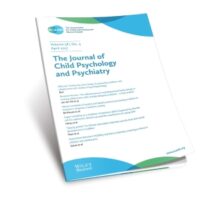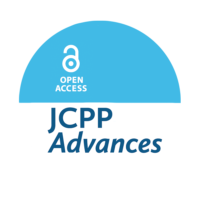ACAMH Website Content Types
-

Neural correlates of face familiarity in institutionalised children and links to attachment disordered behaviour
Open Access paper from the JCPP – “Compared to children from the community, institutionalised children showed smaller amplitudes in the N170, to both stranger and caregiver faces. Amongst the institutionalised group, living in a setting with a higher children-to-caregivers’ ratio was associated with smaller P400 amplitudes”. Paula Oliveira (pic) et al.
Read more -

Explaining the influence of non-shared environment (NSE) on symptoms of behaviour problems from preschool to adulthood: mind the missing NSE gap
Open Access paper from the JCPP – “We assessed the extent to which variance in behaviour problem symptoms during the first two decades of life can be accounted for by measured NSE effects after controlling for genetics and shared environment”. Agnieszka Gidziela et al.
Read more -

Preferential looking to eyes versus mouth in early infancy: heritability and link to concurrent and later development
In a sample of 535 5-month-old infant twins, we assessed eye (relative to mouth) preference in early infancy we investigated the contribution of genetic and environmental factors to the preference for looking at eyes, and the association with concurrent traits and follow-up measures. Charlotte Viktorsson (pic) et al
Read more -

Antidepressants for children and teenagers: what works?
Prescriptions for teenagers are rising. Research has found that the number of 12 to 17 year olds prescribed antidepressants more than doubled between 2005 and 2017. More recent information suggests that prescriptions have continued to increase, especially during the pandemic.
Read more -

Annual Research Review: The impact of Covid-19 on psychopathology in children and young people worldwide: systematic review of studies with pre- and within-pandemic data
Open Access paper from the JCPP – “We aimed to search for and review the evidence from epidemiological studies to answer the question: how has mental health changed in the general population of children and young people?”. Tamsin Newlove-Delgado (pic) and Abigail Russel et al.
Read more -

Brain grey and white matter structural associations with future suicidal ideation and behaviors in adolescent and young adult females with mood disorders
Open Access from JCPP Advances – “To reduce suicide in females with mood disorders, it is critical to understand brain substrates underlying their vulnerability to future suicidal ideation and behaviors (SIBs) in adolescence and young adulthood”. Lejla Colic et al.
Read more -

Research Review: The effect of perinatal interventions on parent anxiety, infant socio-emotional development and parent-infant relationship outcomes: A systematic review
Open Access paper from JCPP Advances – “This review primarily aimed to examine the efficacy of perinatal interventions on parent anxiety, infant socio-emotional development/temperament, and parent-infant relationship outcomes. Secondarily, the review sought to understand how interventions focused principally on one member of the dyad affected the outcomes of the other, and which intervention components were common to successful interventions”. Celia G. Smith et al.
Read more -

Guest Editorial: Overview, implications, and directions of twin design research exploring neurodevelopmental conditions
Open Access paper from JCPP Advances – “We included 26 studies that investigated monozygotic (MZ) twin pairs discordant for ASD and sought to explore biological mechanisms and phenotypic presentations associated with non-shared environment”. Lynnea Myers and Sven Bölte
Read more -

Attention-deficit/hyperactivity disorder and white matter microstructure: The importance of dimensional analyses and sex differences
Open Access paper from JCPP Advances – “Attention-deficit/hyperactive disorder (ADHD) has substantial heterogeneity in clinical presentation. A potentially important clue may be variation in brain microstructure. Using fractional anisotropy (FA), previous studies have produced equivocal results in relation to ADHD. This may be due to insufficient consideration of possible sex differences and ADHD’s multi-componential nature”. Scott A. Jones et al.
Read more -

JCPP Editorial: Volume 63, Issue 11, November 2022
Editorial: Accelerated epigenetic ageing as a consequence of early environmental adversity by Barbara Franke
Read more